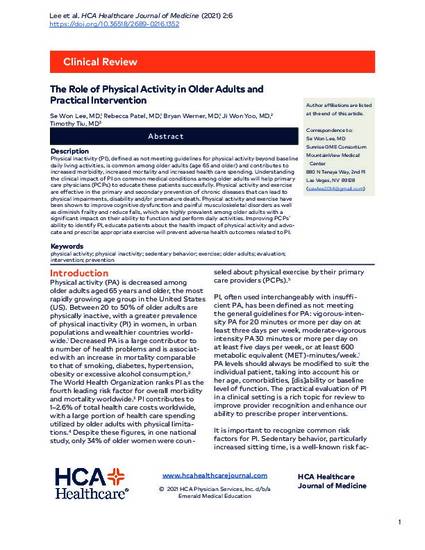
- physical activity,
- physical inactivity,
- sedentary behavior,
- exercise,
- older adults,
- evaluation,
- intervention,
- prevention
Physical inactivity (PI), defined as not meeting guidelines for physical activity beyond baseline daily living activities, is common among older adults (age 65 and older) and contributes to increased morbidity, increased mortality and increased health care spending. Understanding the clinical impact of PI on common medical conditions among older adults will help primary care physicians (PCPs) to educate these patients successfully. Physical activity and exercise are effective in the primary and secondary prevention of chronic diseases that can lead to physical impairments, disability and/or premature death. Physical activity and exercise have been shown to improve cognitive dysfunction and painful musculoskeletal disorders as well as diminish frailty and reduce falls, which are highly prevalent among older adults with a significant impact on their ability to function and perform daily activities. Improving PCPs’ ability to identify PI, educate patients about the health impact of physical activity and advocate and prescribe appropriate exercise will prevent adverse health outcomes related to PI.
Available at: http://works.bepress.com/sewon-lee/12/
